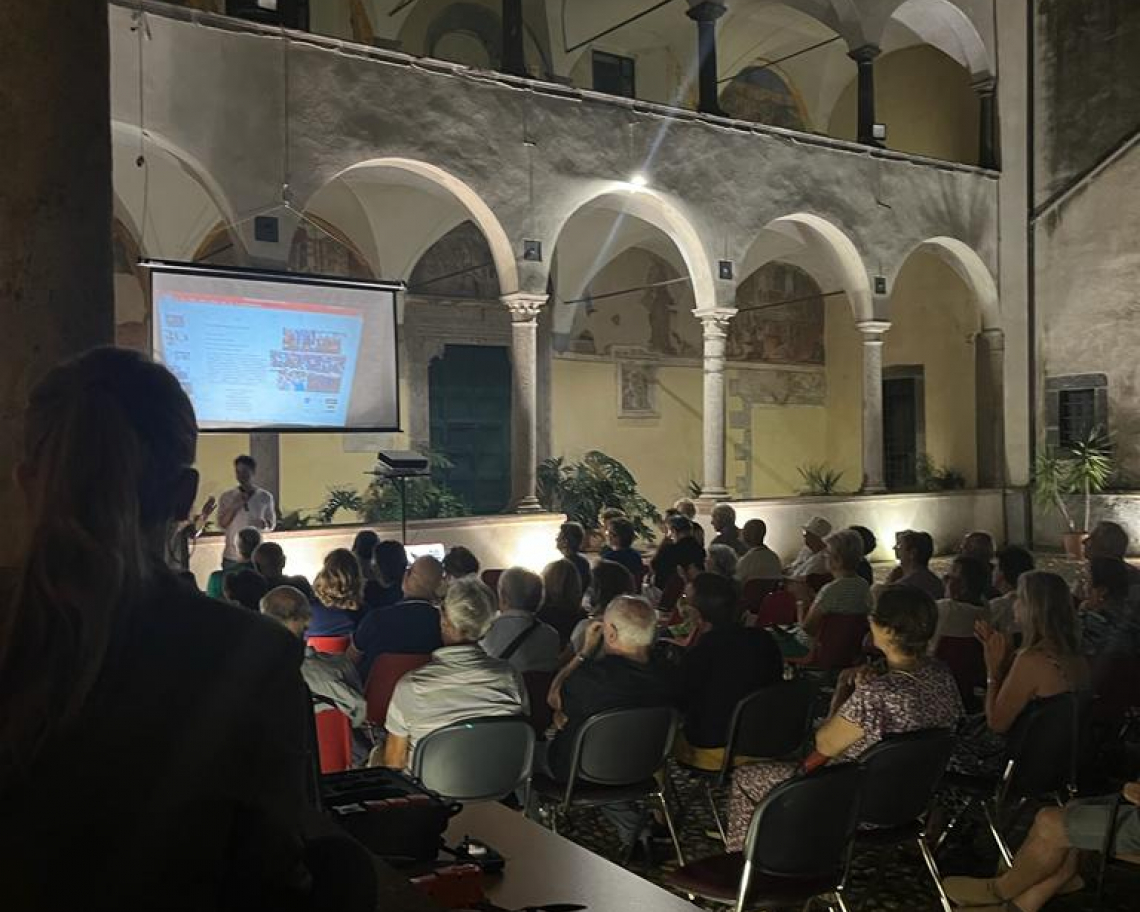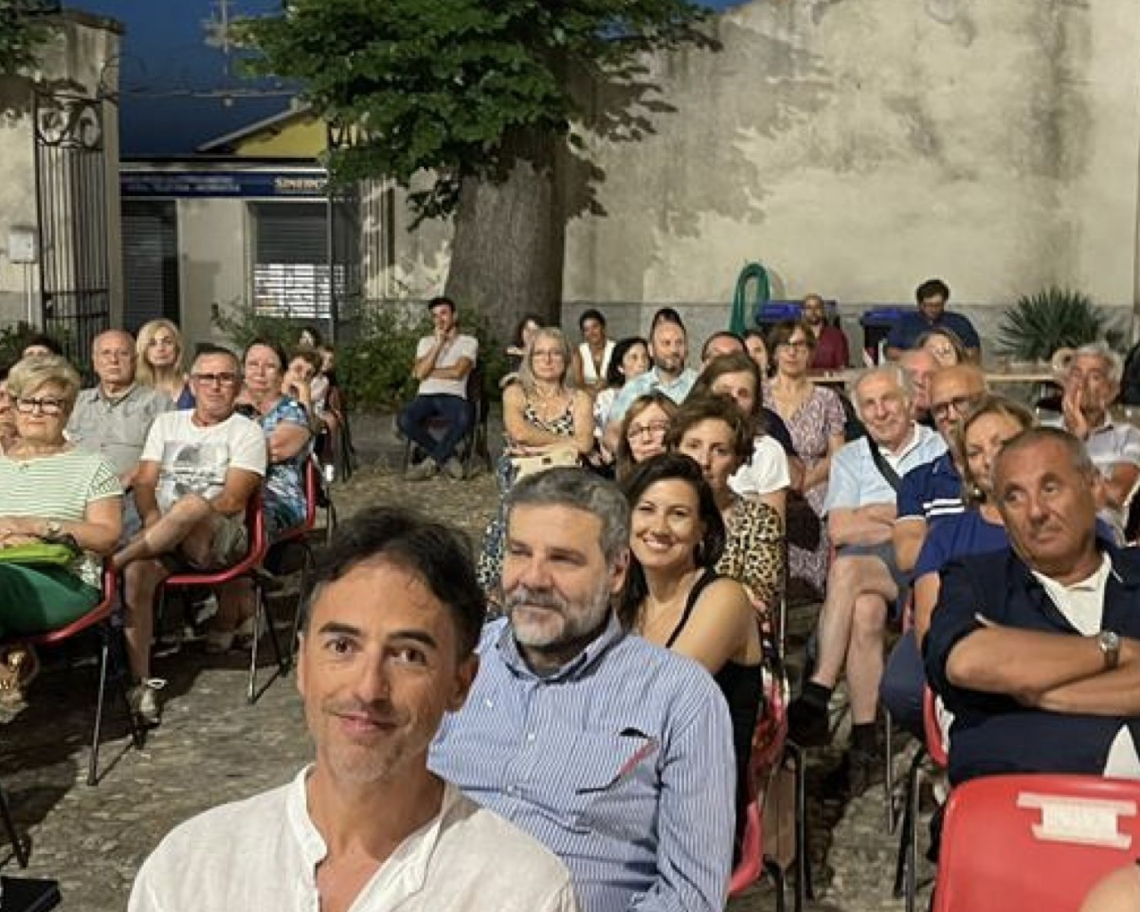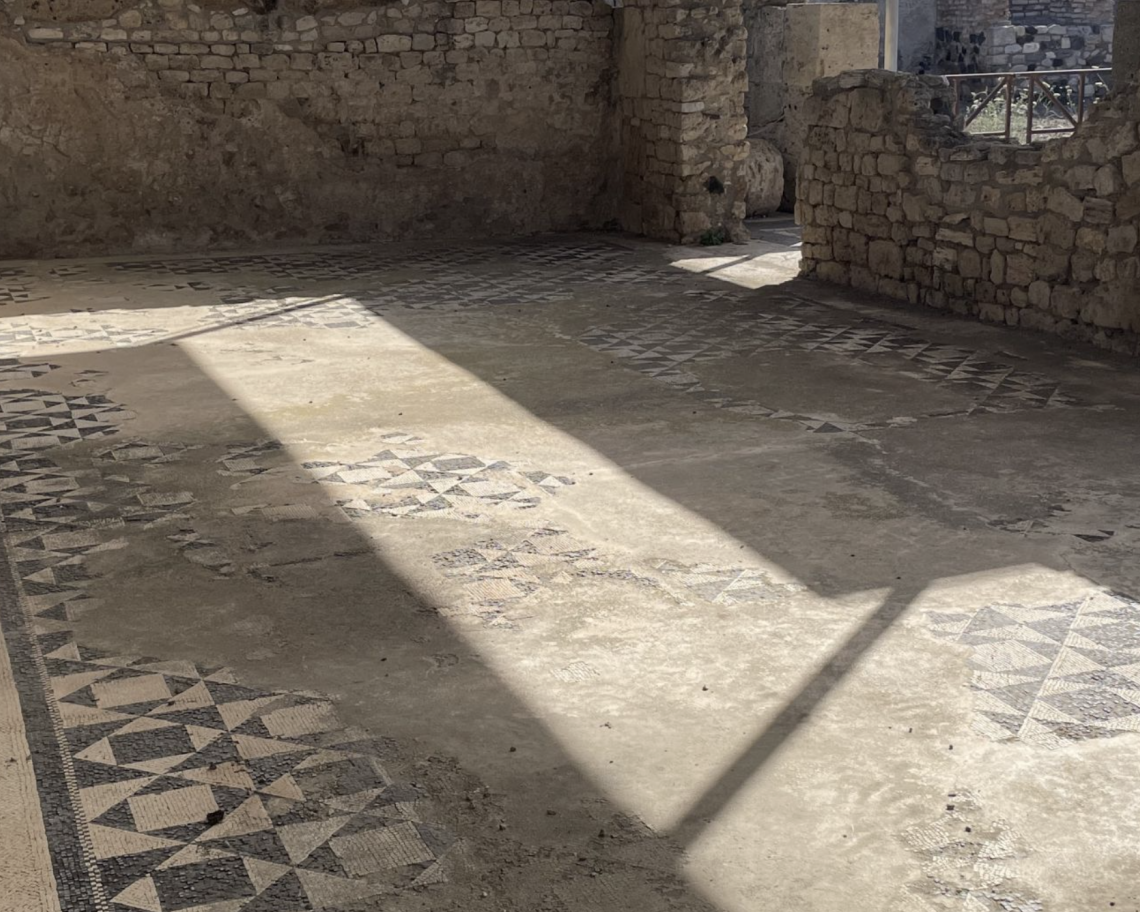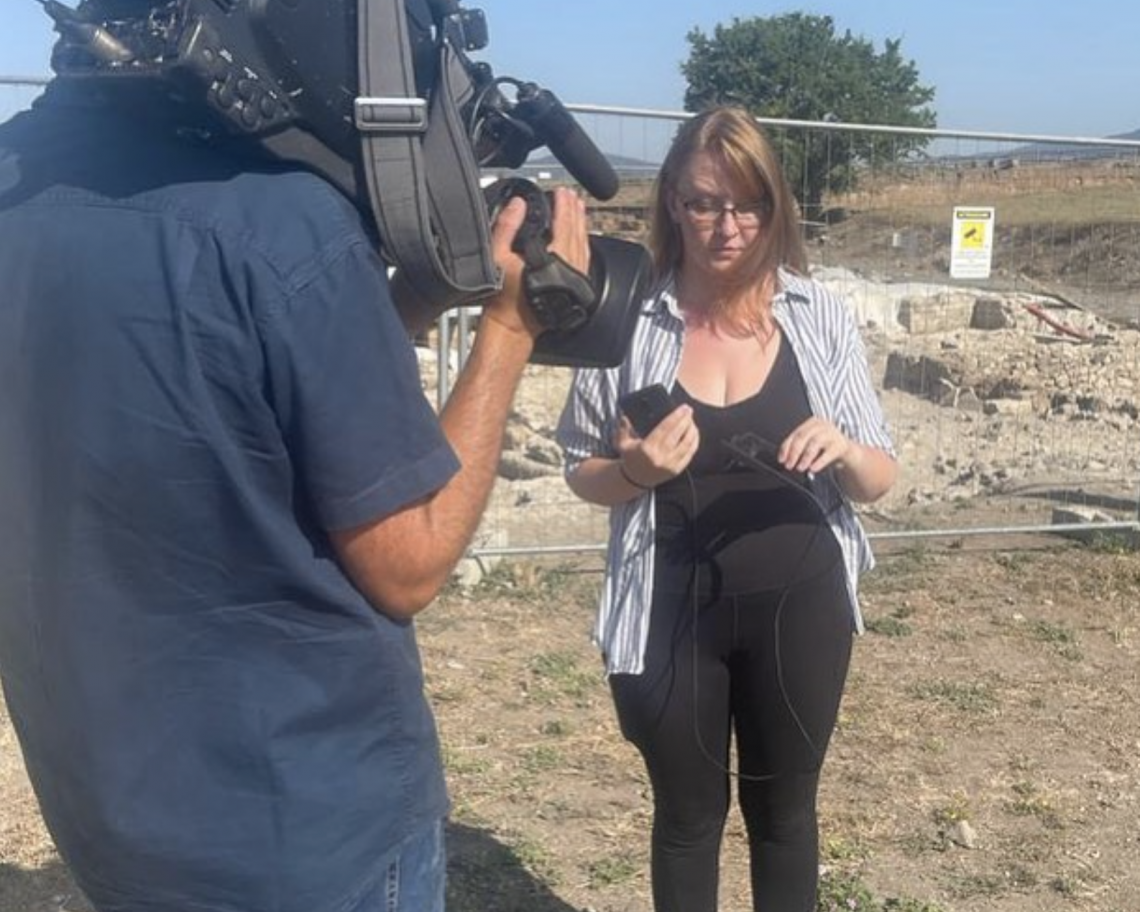Caitlin Childers: Neurocities and Ruinscape: Eye Tracking Experiments

It’s an Etruscan site, and I’ll be working with my professor, Dr. Maurizio Forte, and two undergrads and learning more about the site itself.
My interest in the project is informed by my goal to work in museum education. This semester I was fortunate enough to be a service-learning assistant for a neuroscience course. Working with neuroscience students showed me the importance of an intersection between art historical and neuro-scientific work. This project will be my first opportunity at seeing this interdisciplinary work in action.
For the project itself, we’ll be using eye tracking glasses to examine how people view the site. Specifically, we can see the overlap in what multiple people look at and how long they focus on it. The project is done in collaboration with the Sapienza University of Rome. I’m looking forward to meeting the other researchers and learning about their part in the work, as well as any personal ties they may have to the site. We’ll also be working with some neuroscientists from Duke. Hopefully, if there’s free time beyond work, we’ll be able to visit some museums in the area as well.
I hope you’ll follow along!
Today, July 3rd, was the first day on-site at Vulci! We began by taking a tour of the area and discussing which portions of the site we want to use for our eye tracking experiments. Included is an image of a surviving mosaic from the site.
The mosaic comes from the Domus of the Cryptoporticus. The footprint of this building is all that survives today. It provides a clear indication of the line between the public and private sections of the home. The mosaic comes from the back portion of the structure, a section reserved for those who lived in the home. The other image (left) shows the area currently under excavation by Duke Professor Maurizio Forte and our Sapienza University colleagues. This is one of the three structures that will be a focus of our experiments.
We, the data collection team, did some test runs on the various sites today. Our results, test results from visitors to the site, and tests done with the archaeologists on site will give us the opportunity to compare gazes from vastly different backgrounds. After our portion of the eye tracking was done it was time for lunch.
The entire team was hosted by a local restaurant that made us suppli, deep fried rice with mozzarella and tomato sauce, and a wonderful lasagna. They were so kind and made us feel completely at home. Upon returning to the site we began converting our work from videos to raw data to send back to a Data+ team in Durham for further analysis. We've also begun discussing the best way in which to present our work to the public, specifically considering what visualizations are the most effective.
After today's hard work was done, we returned to our apartment and got the chance to visit Montalto's beautiful beach. We have some truly exciting experiences ahead in the next two weeks, on and off site!
This group had the opportunity to present our work to the community of Montalto di Castro. We included images of our two testing sites, the dig site and the fisherman's domus.
Alongside these images were videos of the eye tracking done there, showing the viewers the step-by-step pattern of the test subject's sight. The heat maps created from these tests were also presented. We included two heat maps from each site. One heat map with the virtual thinking strategies testing and one without.
Some of the participants involved in our eye tracking were also kind enough to make us a meal prior to the presentation! They served us pasta, melon and prosciutto, and all kinds of dessert. This was the second meal provided to us this week by local Vulci supporters.
The night prior to the presentation we had a lovely meal with two journalists and a professor of classical antiquity. They've created a website called Etruscan Times that includes everything from food & banquets to religion to underwater heritage. Their company and knowledge on the topic were a lovely addition to the trip.
Last, but certainly not least, we have been given the opportunity to show our work to all of Italy! TG1, a national Italian television broadcast, filmed us doing our eye-tracking, the archaeologists working on the dig site, and even Dr. Forte's son and his Lego version of the entire project.
We spent our last days at Vulci taking eye-tracking videos with the archaeology team on site. The team had finished their work on the dig site and covered it to protect it from the elements until next summer.
We were only able to collect data on the fisherman's domus site, and we're looking forward to seeing what differences may be visible between their gaze and the layperson's. This experiment was done without any use of visual thinking strategies, unlike the other experiments conducted on the fisherman's domus.
While waiting to do the eye-tracking with the archaeological team, we also transferred additional data collected from our Sapienza University teammates into our own workspace. This data was collected from tourists at the tomb of Caecilia Metella, Cestia Pyramid and the Temple of Minerva Medica.
Caecilla Metella was the daughter of a Roman consul. The pyramid is a tomb for Gaius Cestius, a Roman senator and general. The Temple of Minerva Medica is an ancient temple on the Esquiline Hill.
Unlike the data collected with the archaeological team at Vulci, these sites were recorded using two groups separated by the use of visual thinking strategies.
After this work was done we spent our final night with our roommates on the terrace of our apartment. Our time together was spent eating entirely too much and enjoying each other's company, talking about the differences between Italian and American culture.
The next morning they accompanied us to Rome where we said our goodbyes and prepared to return home to Durham. The data collection team will be taking a break until the school year starts, at which point we look forward to continuing our work on interpreting our data.
Thank you all for taking the opportunity to stay updated on our work and thank you to Duke for giving us this opportunity!









